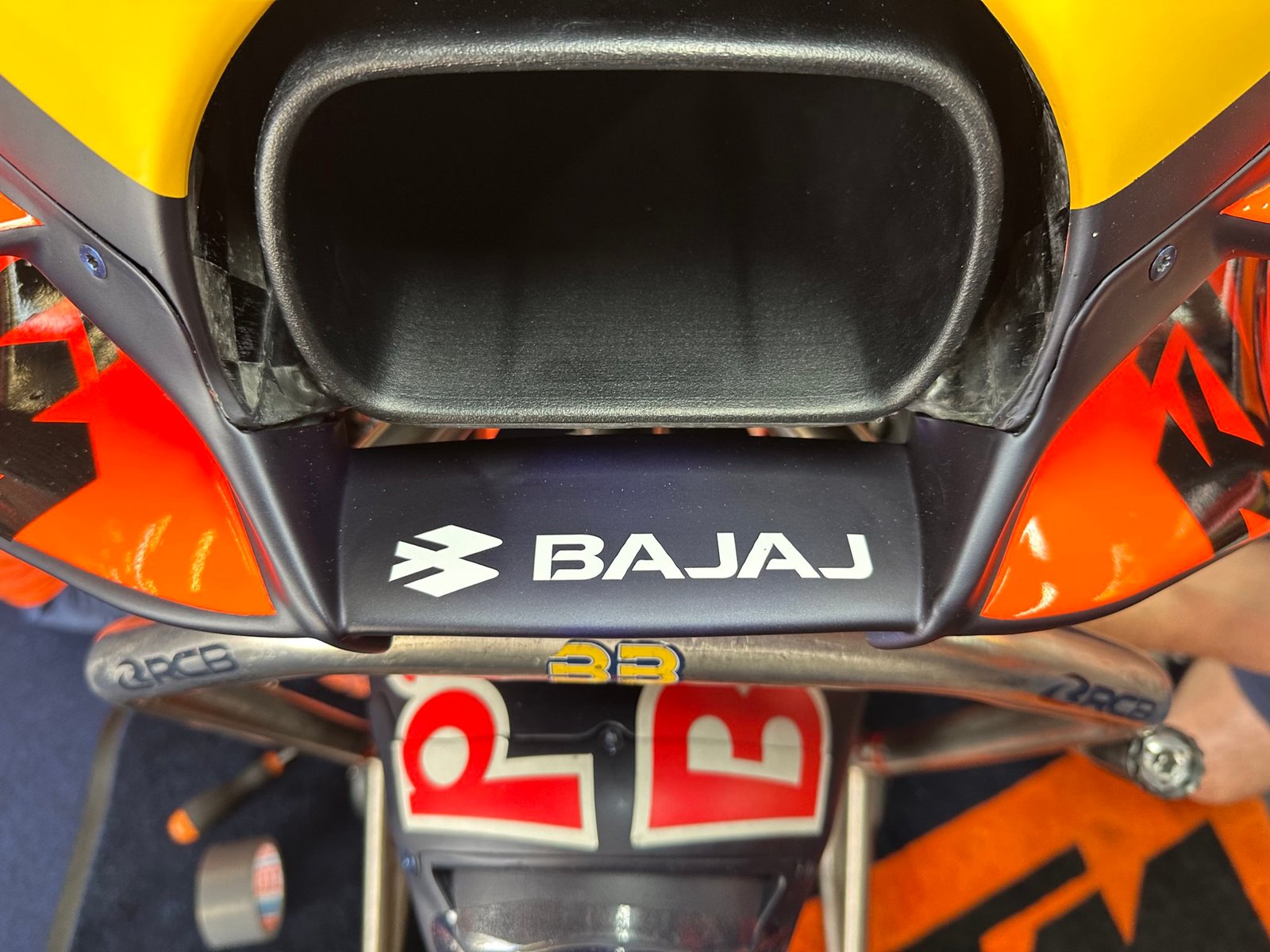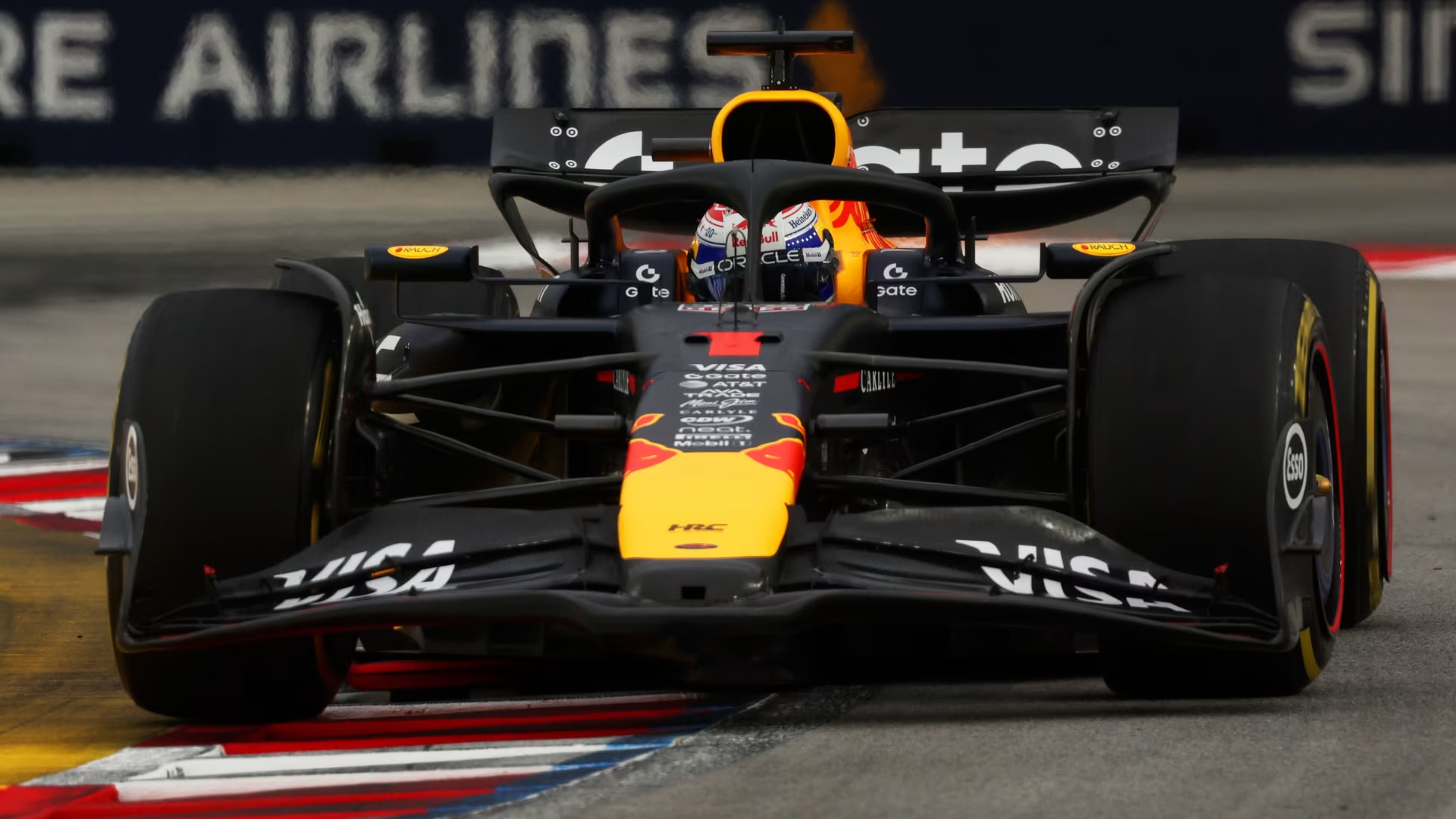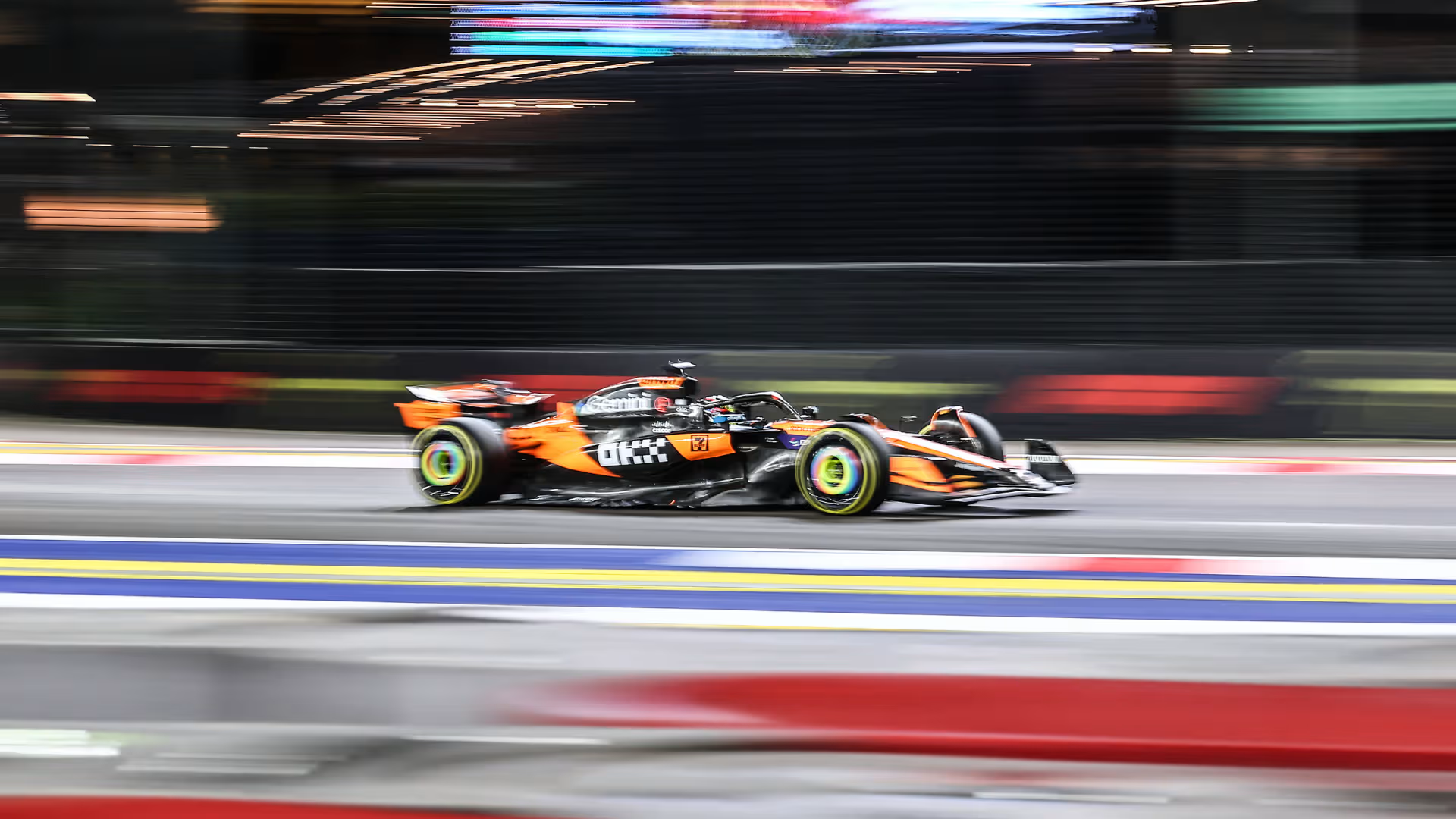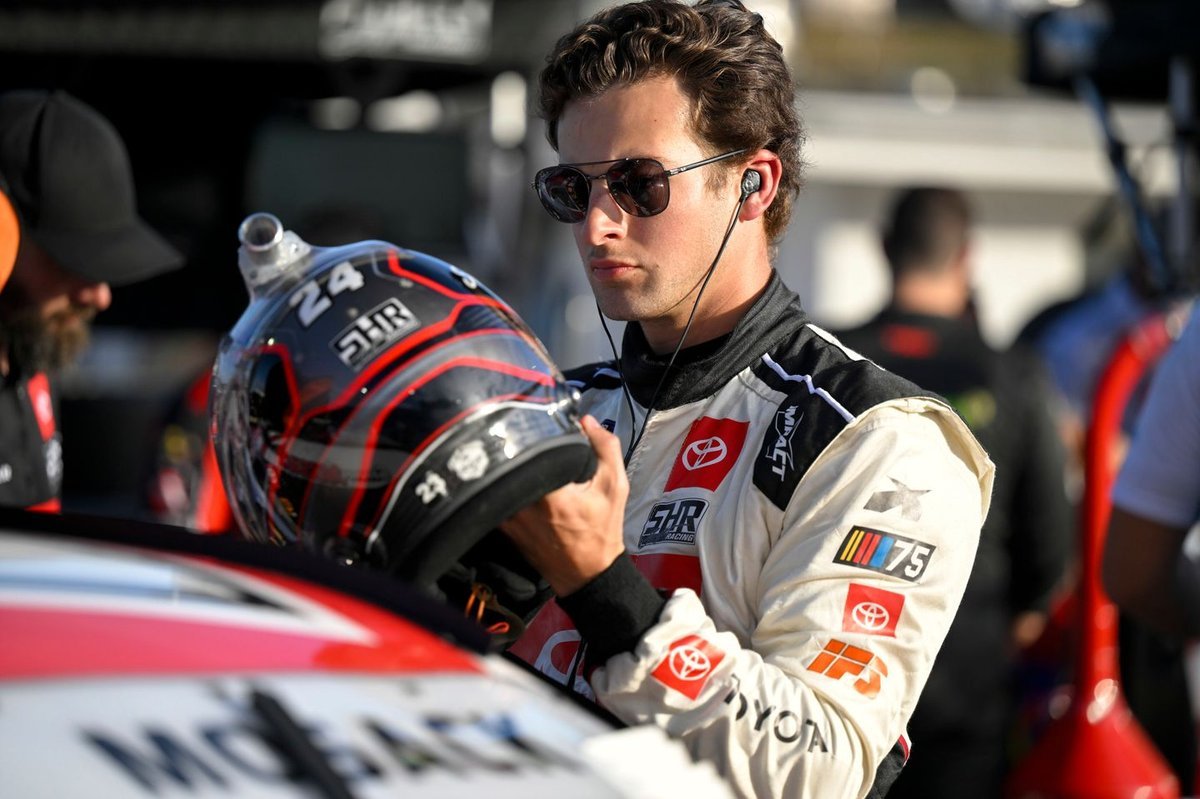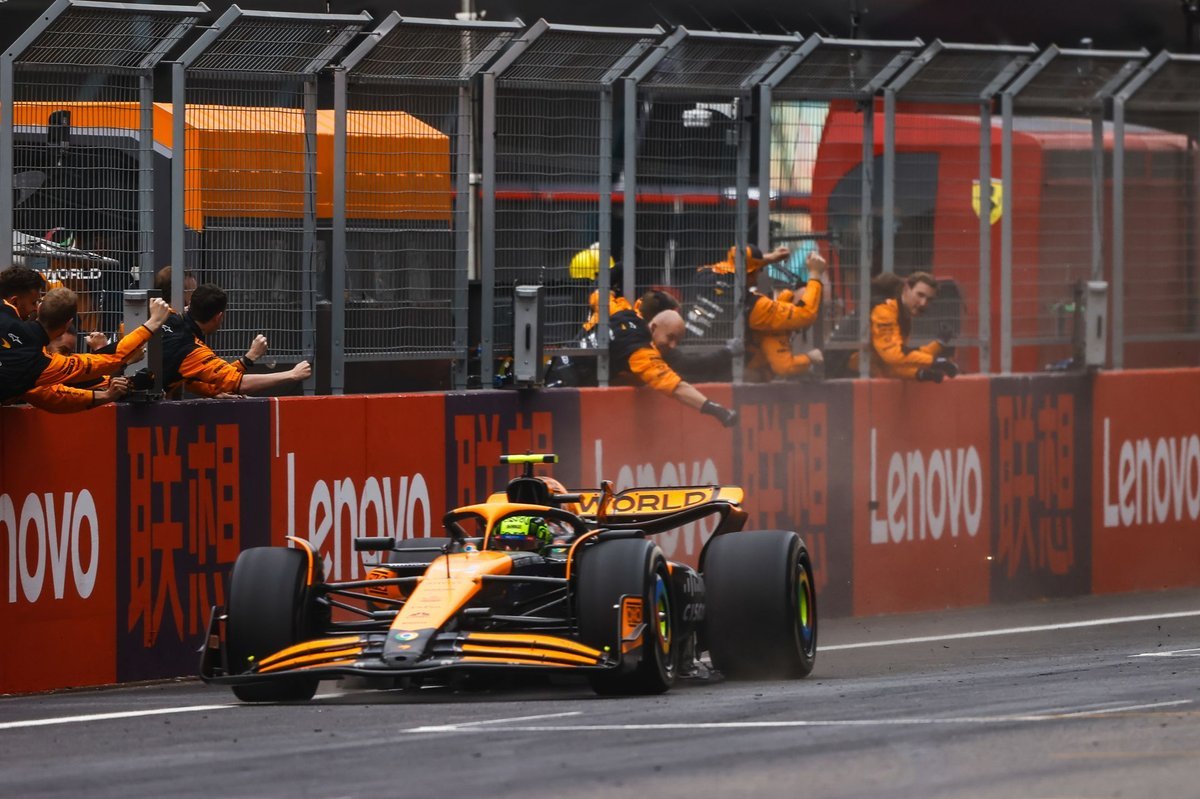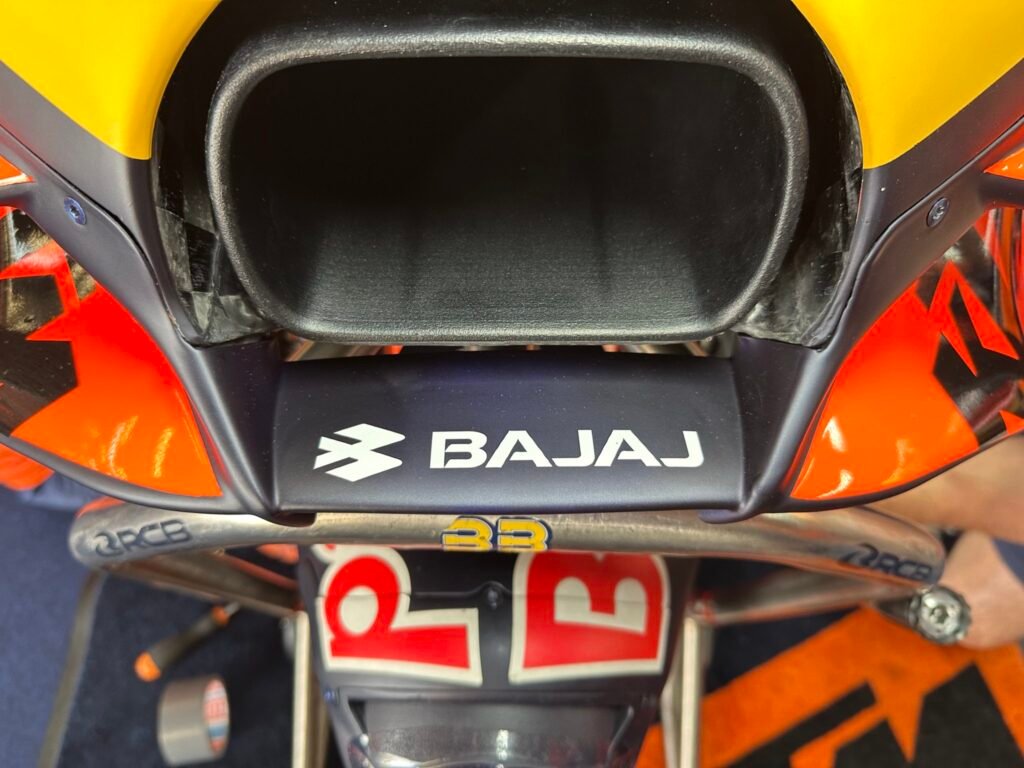
KTM will display the Bajaj Auto logo on its MotoGP bikes from the British GP after a €600 mil bailout that rescued the company from crisis.
Introduction
Did you ever think a financial rescue could look so cool on a racetrack? Well, starting this week at the British Grand Prix, MotoGP fans will see something fresh and surprising on KTM’s motorcycles—the Bajaj Auto logo. This isn’t just a branding move; it’s the symbol of a lifeline. Bajaj Auto, India’s two-wheeler giant, has pumped €600 million into KTM, pulling the Austrian brand out of a serious financial skid.
This isn’t just business—it’s a high-octane twist in the world of motorsport and manufacturing. Think of it like a pit-stop miracle, where a fellow racer jumps out of the pit lane and hands you the fuel you desperately need. Let’s take a closer look at what led to this partnership, what it means for the racing world, and why you should care even if you’ve never watched a MotoGP race.
Table of Contents
| Sr# | Headings |
|---|---|
| 1 | The Breaking News: Bajaj Logo on KTM Bikes |
| 2 | What Led KTM into Financial Crisis? |
| 3 | Bajaj Auto’s Bold €600M Move |
| 4 | Why the British Grand Prix Was Chosen |
| 5 | What This Means for MotoGP Fans |
| 6 | How Bajaj and KTM Have Been Connected |
| 7 | Inside Bajaj’s Strategy: More Than Branding |
| 8 | KTM’s Comeback Plan |
| 9 | MotoGP’s Business Side: More Than Speed |
| 10 | Industry Reactions: Applause or Shock? |
| 11 | Will Other Brands Follow Suit? |
| 12 | What Riders and Teams Are Saying |
| 13 | The Power of Logos in Motorsport |
| 14 | What Fans on Social Media Think |
| 15 | The Road Ahead: Future of KTM-Bajaj Alliance |
1. The Breaking News: Bajaj Logo on KTM Bikes
Starting at the British Grand Prix, KTM’s RC16 MotoGP machines will proudly display the Bajaj Auto logo on their bodywork. This is the first time in MotoGP history that a major Indian automotive brand will take this kind of visible sponsorship role on a European team’s race bike. For Bajaj, it’s not just about the logo—it’s about presence, identity, and influence.
2. What Led KTM into Financial Crisis?
Despite their fierce racing reputation, KTM has been struggling financially. A perfect storm of global supply chain issues, increasing production costs, and declining sales in key markets created a downward spiral. Like many automotive brands post-COVID, KTM found itself stuck between a rock and a rev limiter.
With losses piling up and investments drying out, KTM needed a strategic bailout—not just a temporary fix. Enter Bajaj Auto.
3. Bajaj Auto’s Bold €600M Move
In a jaw-dropping move, Bajaj Auto invested €600 million to stabilize KTM’s operations. To put it in perspective, that’s more than the entire annual budget of some small MotoGP teams combined. This wasn’t a spur-of-the-moment decision. Bajaj had already owned a 48% stake in Pierer Mobility (KTM’s parent company), so the ties were strong.
But this cash injection wasn’t just about saving a partner—it was about revving up influence in Europe, cementing a stronger global footprint, and showcasing Bajaj’s confidence in KTM’s racing legacy.
4. Why the British Grand Prix Was Chosen
Why debut the new branding at Silverstone? Simply put, the British GP is one of the biggest events on the MotoGP calendar. The international spotlight, global TV coverage, and the passionate UK fanbase make it the perfect stage to make a bold visual statement.
By launching the Bajaj-KTM rebrand here, the team ensures maximum visibility—and kicks off a new era under the roar of thousands of screaming engines.
5. What This Means for MotoGP Fans
Fans are in for more than a cosmetic change. The Bajaj-KTM alliance could mean more robust development, better rider support, and possibly even improved bike performance. For Indian MotoGP fans, this is a matter of pride—an Indian logo, on one of the fastest bikes on the planet, racing against giants like Ducati and Yamaha.
Think of it as cricket-level patriotism, but on two wheels and steroids.
6. How Bajaj and KTM Have Been Connected
This isn’t a new friendship—it’s a long-standing alliance. Bajaj first acquired a stake in KTM back in 2007, gradually becoming one of its largest shareholders. Over the years, they’ve co-developed several successful bikes for global markets, including the KTM Duke and RC series.
So while this €600M might feel dramatic, it’s really just the next chapter in a story that’s been racing along for nearly two decades.
7. Inside Bajaj’s Strategy: More Than Branding
Bajaj isn’t doing this for show. This move opens doors for technological exchange, global reach, and expanded market access. The branding on the MotoGP bike is the cherry on top of a much larger cake—a cake made of factory partnerships, R&D investments, and performance synergy.
This investment could also act as a launchpad for Bajaj’s future electric mobility ambitions, using KTM’s European R&D strength to crack international EV markets.
8. KTM’s Comeback Plan
With Bajaj’s investment secured, KTM isn’t just planning to survive—it plans to attack the leaderboard. The money will be used to streamline production, invest in new technologies, and support their MotoGP team operations, which have been pushing hard against some of the most dominant names in racing.
Watch out for upgraded bikes, better parts, and more aggressive racing strategies as the second half of the MotoGP season unfolds.
9. MotoGP’s Business Side: More Than Speed
For many, MotoGP is just about who crosses the line first. But there’s a complex business engine running behind the scenes. Branding, sponsorship, R&D, and corporate strategy are as vital as throttle control.
The Bajaj-KTM move shows how tightly motorsport and business are intertwined—you don’t just need speed, you need funding, vision, and partners who believe in your journey.
10. Industry Reactions: Applause or Shock?
The response from the motorsport world has been mixed. Some see it as a masterstroke—a smart, strategic realignment between two powerhouses. Others are cautious, wondering if KTM’s identity might be overshadowed by Bajaj’s growing influence.
Still, most agree on one thing: This partnership adds spice to the grid and reaffirms that MotoGP is about more than European titans.
11. Will Other Brands Follow Suit?
Could this be the beginning of a trend? Will more Asian or Indian manufacturers dive into European motorsportthrough such partnerships? Possibly. With MotoGP becoming more global, and markets like India booming in motorcycle sales, this could be the beginning of a new sponsorship era.
Brands like TVS, Hero, and even Chinese automakers will be watching closely.
12. What Riders and Teams Are Saying
KTM riders have welcomed the move, with insiders saying it has boosted morale in the paddock. Having a stable financial foundation allows the team to focus on what they do best—race hard and chase podiums.
Don’t be surprised if we start hearing “For Bajaj!” from the pit wall before race starts.
13. The Power of Logos in Motorsport
You might think a logo is just a sticker. But in motorsports, it’s a symbol of trust, ambition, and intent. When fans see the Bajaj logo tearing down the track at 300km/h, they’re seeing a story of survival and evolution.
Just like Ferrari’s prancing horse or Yamaha’s tuning forks, Bajaj is aiming for instant global recognition.
14. What Fans on Social Media Think
Social platforms exploded when the announcement was made. Many Indian fans shared pride, tweeting things like “Bajaj in MotoGP? Dreams do come true!” Others were curious, asking if this could pave the way for an Indian Grand Prix.
The general sentiment? Excitement, surprise, and national pride.
15. The Road Ahead: Future of KTM-Bajaj Alliance
This isn’t a one-race affair. It’s a long-term strategic shift that will likely see deeper integration between the two companies. We could see more co-developed bikes, shared racing technology, and maybe even an Indian rider on a KTM-Bajaj bike someday.
The wheels are turning, both on the racetrack and in boardrooms.
Conclusion
The KTM-Bajaj partnership is more than just a business deal—it’s a rescue mission, a global branding move, and a statement of intent. From financial freefall to full-throttle comeback, KTM’s story now includes an Indian powerhouse helping steer the ship.
As the MotoGP world gears up for Silverstone, fans will witness not just another race—but a visual emblem of resilience, partnership, and a bold new future. Bajaj didn’t just save a company—it helped rewrite a racing legacy.
FAQs
1. Why is the Bajaj logo appearing on KTM bikes in MotoGP?
Because Bajaj Auto recently invested €600 million in KTM, saving the brand from a financial crisis and reinforcing their partnership.
2. Is Bajaj now the majority owner of KTM?
No, Bajaj is still a major shareholder, but it doesn’t own KTM outright. It holds significant influence via its stake in Pierer Mobility.
3. Will this investment affect KTM’s racing performance?
Yes, the financial boost is expected to improve bike development, team support, and long-term competitiveness.
4. Is this the first time an Indian brand is on a MotoGP bike?
Yes, this is the first time an Indian auto company’s logo will be prominently featured on a MotoGP race bike.
5. Can we expect more Indian involvement in MotoGP now?
Possibly. With Bajaj making waves, other Indian companies might explore partnerships or sponsorships in global motorsports.

